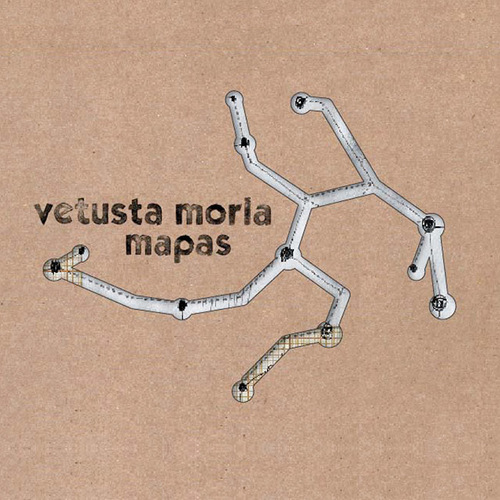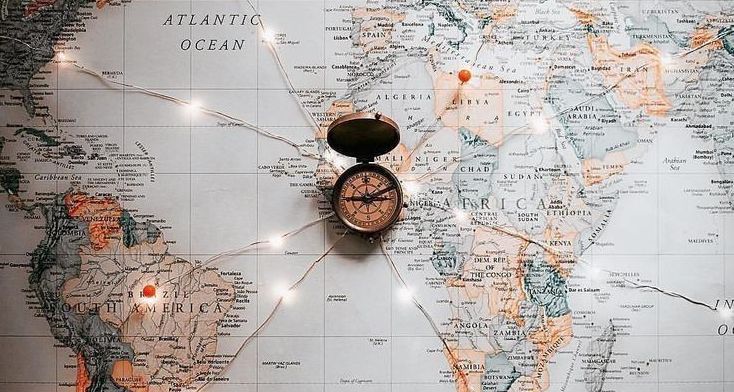Vetusta Morla‘s second album after their debut, Un Día en el Mundo, composed and recorded after the intense tour in Spain, Mexico and Argentina. The band spent a year conducting drills with new textures and instrumentation until it came to a recording method designed to recreate in the studio those moments of collective communication that occur on stage: recording most of the album playing together, giving priority to emotion and energy over technical perfection; preferring the naturalness and the organic before the surgical neatness.
Mapas constitutes a descent to the earth, to reality and to the present. While the first album by Vetusta Morla was based on movements and hypotheses, in the contemplation of the past or in dreaming a future, this time it talks about objects, consequences, time lines that freeze to draw maps of who we are, traces of our conquests and failures, collections of medals and scratches. Maps that put in front of us another map without a legend with which to advance, build, or, just, understand the present. Maps in which, once again, the listener is invited to design their own route.
Illustrations: Montse Montero.
Calligraphies: Vetusta Morla, Mídori, Mire, Pato, Vila and Germán.
After the colossal success of her debut “Un día en el mundo“, Vetusta Morla faced the challenge of having to edit a work that was at the level of that first album or that was better. “Mapas” was released in May 2011, raising a question: Would it be better than its predecessor? Or would you respond to the maxim that “the second parts were never good”? To begin to unveil the unknown, in April of that year, the group lead by Pucho in voice posted the song “En el río” on their official website. Then, on May 3, he made the entire album available before its presentation in physical format, which was on the 6th of the same month. Forty-nine minute long “Mapas” consisted of twelve songs and was released through Pequeño salto mortal, the band’s own label. The registration was carried out at the Garate Estudios de Andoian, Gipuzkoa. The mix was made at Sonobox (Madrid).
The album presents a more elaborate instrumentation, but at the same time without overloaded atmospheres. Throughout the twelve songs that make up the album, each of the elements remains in the right place: everything is in its place. With a sense of detail and respect for the sound architecture of each track, the people of Madrid created a work with some peculiarities that are worth noting. For example, the opening, which comes from the hand of “Los dias raros.”
The new stage of Vetusta Morla turned towards the search for the natural: most of the album was recorded with the musicians playing together. At the same time, the melancholic and introspective character of several cuts of the debut was maintained, but the instrumental approach is more atmospheric and calm: the songs have a slower rhythm, leaving aside the wild character of rock. Although, of course, there are some exceptions: “El Hombre del Saco” walks with a tribal base of toms by David “El Indio” García, which induces an energetic mantra along with the guitars of Guille Galván and Juanma Latorre plus the Pucho’s captivating voice; “Mapas”, the album’s homonymous cut, is an indie lunge with a lot of energy.

When it comes to a record production, the rule would indicate that you should not start a record with a ballad, but rather with your most powerful songs. Vetusta Morla skipped this precept and opened “Mapas” with this beautiful and melancholic piece that lasts more than six minutes.
The “Mapas” tour was the definitive leap to the top. Although with the release of “Un día en el mundo“, the group had already toured extensively in Spain, Mexico and Argentina – they even played at the mythical Luna Park in Buenos Aires – with “Mapas” the expansion was greater: eighteen months tour, more than a hundred concerts in different cities (London, New York, Texas, Los Angeles, Chicago, Tijuana, a show before 30,000 people at the Vive Latino festival in Mexico City and more), and a closing, in October 2012, with four presentations with the Murcia Region Symphony Orchestra (all in two days and with full capacity) at the Circo Price in Madrid.

